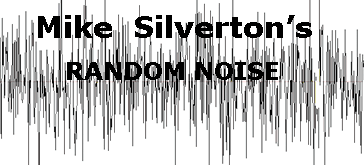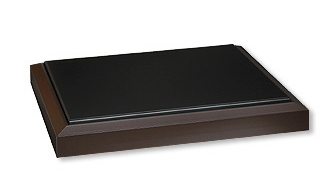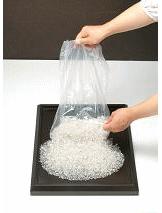Random Noise 21

Random Noise 21
He’s writing about what?!
I freelance for NuForce, editing and such. Consequently whatever I have to say about NuForce products – in this case, the top amp’s third iteration – is easily dismissed. Highly suspect. Unethical. Just plain wrong!

Fair enough. I’m composing these remarks before the Special Edition’s arrival. If, farther along, I should happen to say the new mono pair’s the greatest thing since oxygen, I’ll surprise no one. Again, fair enough. But would you settle for a prediction? My good opinion will be shared by a great many others with no NuForce connection. I’d bet an eardrum.
Whence the optimism? Now and again I check out NuForce.com to see what needs tidying up – one of my responsibilities. Recently, more as a matter of curiosity, I skimmed a pack of amp reviews posted on the site and was struck by a unanimity of opinion, with particular regard to what qualities set NuForce amps apart. NuForce has had a lot of good press. I doubt the reviewers conferred. From what I’ve heard about the V3 amplifier board, it’s better than the very, very good V2. But audibly better? We shall see. (Again your suspicions go on the alert. As they should. I understand. I do.)
And also this. I’ve largely declined offers to cover products for which NuForce has equivalents. By my admittedly curious standards, that would be improper. To explain “largely”: NuForce makes audio cables. I’ve not tried them. My system is cabled with Acoustic Revive, which I’m disinclined to replace. I’ve covered a lot of AR products here, enthusiastically by and large. You’re still skeptical. But of course you are. Read on, anyway, just for the hell of it.
As mentioned, the “V3” tag on the R9V3SE (R for Reference) mono identifies a revised amplifier board, thus Version 3. I was offered the opportunity to send in my V2 pair for a board replacement, but that would have meant living with the old case. Having fallen in love with a photo of the new look, I chose to hold out. Also, I felt it prudent to have the V2 amps on hand for comparison.
So, again, before the SE’s V3 arrival, I’ll briefly restate my opinion of the R9V2SE as a remarkable accomplishment – so remarkable, in fact, that I wonder how it can be improved upon. As is only fitting, I’ll operate the R9V3SE under listening conditions identical to those of its predecessor, to wit:
Wilson Audio WATT / Puppy 8 speakers, Aurum Acoustics Integris CDP (a too well kept secret), and a raft of Acoustic Revive products: virtual grounds for the amps and CDP, five power cords, one pair of balanced interconnects, two pairs of speaker cables, two passive power-distribution boxes, four cable lifters, dark and clear quartz-crystal pucks, two quartz-crystal-based isolation platforms, dummy plugs in vacant outlets, outputs and inputs, two room-acoustic panels, a disc demagnetizer, a negative-ion generator, and a Schumann Resonance generator. (A partridge in a pear tree is due any day.) Nordost Quantum footers substitute for the amps’ original feet. I’ve covered a lot of this in Random Noise and elsewhere.
The R9V3SE is en route. Meanwhile, impressions of the R9V2SE monos: dead quiet, exquisitely dynamic, texturally pristine, harmonically luxuriant, feather-touch subtle, gracefully muscular, yin-rich, likewise yang, and as green a product as exists in high-end audio – a pleasure in every dimension, including the fifth and maybe even the sixth. I mentioned when I first wrote about NuForce amps – and had no connection with the company – that they sounded better than the power-devouring, 200-pound-per Mark Levinson 33H pair I’d been using for several years. And that was NuForce’s V1 version! (As an audiophile in semi-good standing, I kept the elephantine Levinsons in standby and only understood what damage this luxury inflicted after their departure. I still shudder when I think of those utility bills.)
Have a cigar! Identical twins!
The R9V3SE duo is here. In muted, matte silver. (The alternative is black.) The handsomely sculpted façade is the work of a London design firm, Kiwi and Pom. To remain with predictions, this little beauty’s bound to show up in a museum’s industrial design section. (If anyone from MoMA is reading this…)
I thought the price would be higher. Not so. Still $5k / pair. NuForce’s Jason Lim was quick to mention that, at $2300, the 200-watt-per-channel Stereo 8.5V3 is a viable contender. I should think that anything with the V3 board occupies that category.
But let us not get ahead of ourselves.
This is a different beast. It’s the R9V3SE’s midrange that initially commands one’s attention. I’ve done a good deal of listening. Early impressions have only grown stronger. The V3 presents a gorgeously textured midrange. Sweeter, certainly, and a little warmer, that too perhaps, but my overriding impression is one of harmonic and timbral enrichment – easy, unforced qualities that create a soundstage I can best describe as the difference between a good 3-D image and reality. Given the right recording – always! – the presentation is alive.
The midrange’s near-palpable textures extend in both directions. Nothing about the low or high end seems distinct from the middle. And I don’t mean to imply a sense of gentility or homogenization. The amp’s character is that of the recording. Good orchestral recordings, ranging as symphonic music will do from mellow to raucous, remain intact however loud the tuttis and crescendos. The big moments don’t congeal – no mean accomplishment! When I do hear congestion, the blame lies with the production. Brasses blare in their white-hot way, strings do their silken thing, pianos sound as big as life, vocalists stand there in your room…
For us sub-billionaires, $5k is an attention-getting figure. Even so, Audiophilia occupies a terrain wherein amplifiers costing from several to many times as much are as common as dandelions. I wouldn’t hesitate to compare R9V3SE with the best of them. I suspect that tubeniks might be especially surprised, not to say enchanted.
No need to go on. You probably don’t believe a word of this. Just you wait…
Acoustic Revive platforms, again but different

Like so many of Ken Ishiguro’s conceptions, the man’s quartz-based isolation platforms are unusual, and that puts it softly. Other than size and recommended application, the 8-1/2” x 13-1/2” TB-38 and 15” x 19-1/2” RST-38 are identical: a nicely designed base framing a shallow depression, a bag of smooth-edged quartz-crystal gravel of varying size, and a lid. One empties the gravel into the base, smoothes it over, and applies the lid.

(Photos of and information about the quartz-based isolation platforms have not yet appeared on AR’s Web site. The recently discontinued YST-64 speaker underboard pictured here is identical in appearance to the RST-38 and TB-38. Polypropylene and quartz-crystal fill comprise the difference between the YST-64 and RST-38.)
Ken Ishiguro wanted me to try two of the large quartz platforms under my WATT / Puppies. Eight hardy spikes separate the Wilson pair from our carpeted, pumpkin-pine floor (it’s an 1842 house). The spikes face into small brass discs Wilson provides for his fastidious clientèle. Dave and crew would prefer to see customers set up their speakers as intended, i.e., with spikes. My guess is they frown upon gainsayers and apostates. I didn’t exactly ask.
I’ve never had my WATT / Puppies at other than their minimum recommended elevation, which is to say that I’ve used none of the speakers’ provided spacers. If I wanted to check out the quartz platforms (I do! I do!), I’d need to remove the spikes and their locking nuts, leaving the plump tapered pucks in place. The platform’s total height (about 1-3/4”) is close to that of the spikes. The blunt pucks would make harmless contact with the platforms’ lids.
So that’s what I did. As a one-geezer operation, getting the heavy Puppies on to the platforms without inflicting damage or popping a gut posed no challenge. Nary a scratch nor ding, and my innards are where they were. (I’ll describe the maneuver if you’re interested. Email me.) With the speakers’ top units replaced and cables reconnected, I was ready to cringe or at the very least send Wilson an apology for departing the reservation.
Hallelujah! Amen and gesundheit! No need! The speakers never sounded better. As a bonus, I’m able to fuss about with separation and toe-in with an ease the spikes denied me, and that, my fellow wingnuts, is a very big deal. Having angled the speakers in from where they stood on spikes, I’m getting a much more solid image. And I’ve only just begun!
Which brings us to procedure, or better, its absence. An A/B comparison – spikes versus platforms – is impractical. Enough that I’m familiar with the room and the new amps and hear nothing going on I could possibly describe as a diminution. Quite the contrary, matters have improved, and if quartz has anything to do with it, that’s just peachy. Overall, Ken Ishiguro’s ideas about good sound have made their mark here. While I hesitate to describe myself as a true believer, I’d certainly plead guilty to being an enthusiast.
Inventory and epilogue
One TB-38 platform supports two AR power-distribution boxes behind the low cabinet on which the system’s electronics sit. Two more TB-38 platforms and a quartet each of Nordost Quasar points hold the NuForce monos aloft. The CDP reposes on an RST-38 platform. And under the speakers two more of the same, for a total of six quartz isolation platforms, three small, three large.
I don’t understand much about physics or electronics, less about the exotica that populates the fringe. I do understand that I’m getting great sound. How to itemize what accounts for one’s sweet-spot delight is a challenge I’ll never be up to. And I’ll never go back to spikes.
US prices: TB-38, $725 / RST-38, $1100. For information, LotusGroupUSA.com.
Postscript
To return briefly to Acoustic Revive’s RR-77 Schumann Resonance Generator and the KingRex power supply I recommend as an improvement over the RR-77’s provided wall wart: I mentioned that the PSU’s North American distributor, Audio Magus (AudioMagus.com), will replace the basic PSU’s flimsy 3.5mm output fitting with a sturdier equivalent. I didn’t include the fee, $35. (The more expensive Mk II version includes a Neutrik XLR output fitting as a welcome bit of overkill.)

![]()
Don’t forget to bookmark us! (CTRL-SHFT-D)
Stereo Times Masthead
Publisher/Founder
Clement Perry
Editor
Dave Thomas
Senior Editors
Frank Alles, Mike Girardi, Russell Lichter, Terry London, Moreno Mitchell, Paul Szabady, Bill Wells, Mike Wright, and Stephen Yan,
Current Contributors
David Abramson, Tim Barrall, Dave Allison, Ron Cook, Lewis Dardick, John Hoffman, Dan Secula, Don Shaulis, Greg Simmons, Eric Teh, Greg Voth, Richard Willie, Ed Van Winkle, Rob Dockery, Richard Doran, and Daveed Turek
Site Management Clement Perry
Ad Designer: Martin Perry





Be the first to comment on: Random Noise 21